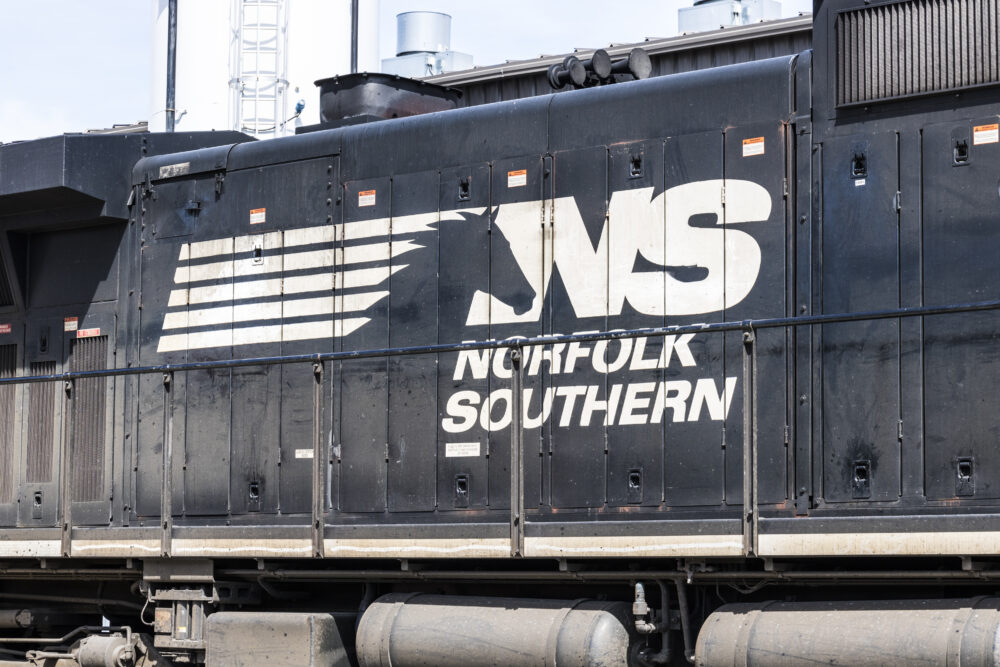Ohio AG Files Lawsuit Against Norfolk Southern Over “Entirely Avoidable” Train Derailment
Norfolk Southern put profits ahead of public safety, resulting in the release of over 1 million gallons of hazardous chemicals during the train derailment, the lawsuit claims

The state of Ohio has filed a 58-count lawsuit against Norfolk Southern in the wake of February’s train derailment near East Palestine, which has raised both health and environmental concerns over chemicals released at the crash site.
The complaint (PDF) was filed by Ohio Attorney General David Yost in the U.S. District Court for the Northern District of Ohio on March 14, seeking to force Norfolk Southern to pay for cleanup costs, health side effects and environmental damages, as well as punitive damages for an accident Yost says could have been prevented.
Early last month, 50 cars on a massive Norfolk Southern train derailed near Ohio and Pennsylvania borders, resulting in numerous tankers full of toxic chemicals being breached and catching fire.
This caused a temporary evacuation of nearly 2,000 local residents, and there have been growing reports of illnesses at the train derailment site, as well as a number of animal deaths and concerns about water contamination in a wide area around the accident location.
While the investigation of the crash continues and health experts are continuing to evaluate the long-term health risks, a growing number of Norfolk Southern toxic train derailment lawsuits are being filed by those impacted, including claims for economic damages, medical monitoring and personal injuries.

Did You Know?
Millions of Philips CPAP Machines Recalled
Philips DreamStation, CPAP and BiPAP machines sold in recent years may pose a risk of cancer, lung damage and other injuries.
Learn More“Ohio shouldn’t have to bear the tremendous financial burden of Norfolk Southern’s glaring negligence,” Yost said in a press release announcing the lawsuit. “The fallout from this highly preventable incident may continue for years to come, and there’s still so much we don’t know about the long-term effects on our air, water and soil.”
Yost noted that Norfolk Southern has made public statements that it will address the situation properly, but the lawsuit was brought to ensure that the company “keeps its word.”
The lawsuit cites Norfolk Southern for numerous hazardous waste and pollution law violations at the state and federal level, as well as common law negligence, public nuisance and trespass laws.
According to the complaint, the train derailment led to the release of about one million gallons of hazardous chemicals, and is indicative of a growing trend of train derailments linked to Norfolk Southern’s transportation of hazardous materials. The complaint notes the company’s railway accident rate has increased 80% in the last 10 years, and at least 20 Norfolk Southern train derailments have involved chemical discharges since 2015.
Yost indicates investigations have revealed chemicals from at least 39 of the rail cars have been detected in numerous Ohio waterways, including Sulfur Run, Leslie Run, Bull Creek, North Fork Little Beaver Creek, Little Beaver Creek, and the Ohio River.
“The Derailment was just one in a long string of Norfolk Southern train derailments, hazmat incidents/community evacuations, and releases of hazardous materials, hazardous substances, hazardous wastes, and/or other harmful pollutants into the environment,” the lawsuit states. “The derailment was entirely avoidable and the direct result of Norfolk Southern’s practice of putting its own profits above the health, safety and welfare of the communities in which Norfolk Southern operates.”
Norfolk Southern Toxic Train Derailment Investigations
In addition to an ongoing investigation by the National Transportation Safety Board (NTSB), which is looking into reports of a potential brake problem that may have contributed to the accident, as well as the train’s massive size, other agencies are also looking into the causes of the accident and Norfolk Southern’s business practices and response.
Late last month, the U.S. Centers for Disease Control and Prevention (CDC) sent a response team from its Agency for Toxic Substances and Disease Registry (ATSDR), which is now interviewing residents about their health concerns and symptoms they have developed since the accident.
In addition, U.S. Senator Maria Cantwell, chair of the Senate Committee on Commerce, Science and Transportation joined a growing number of voices calling for an examination of the railroad industry’s safety practices when transporting hazardous materials. In a letter sent to the CEOs of the seven largest railroad companies in the U.S., she requested they turn over all detailed information and documents on those practices by March 17.
On February 10, the U.S. Environmental Protection Agency (EPA) sent a notice to Norfolk Southern, announcing it was considering to make the company pay for the cleanup costs under the Comprehensive Environmental Response, Compensation, and Liability Act (CERCLA). Since then, EPA officials have said in live interviews that they will definitely require Norfolk Southern to pay for those costs.
Get more articles like this sent directly to your inbox.
"*" indicates required fields




0 Comments